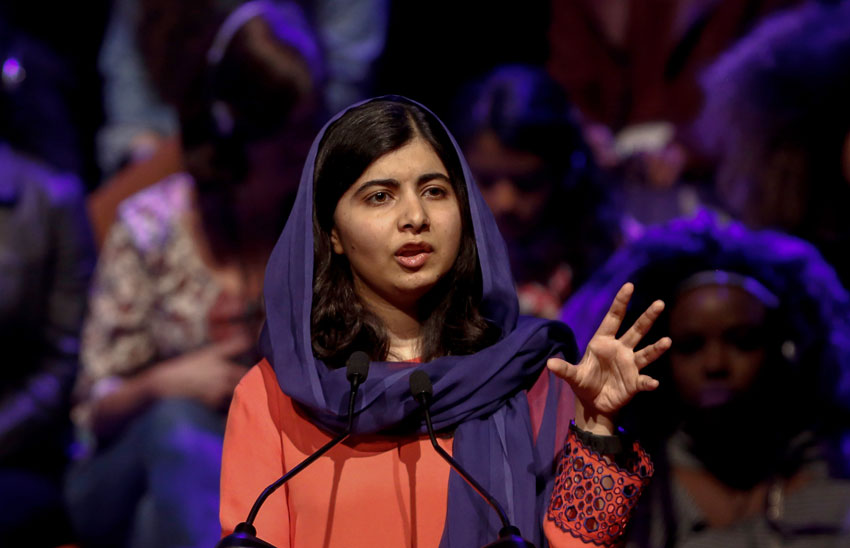Not Educating Girls Costs Global Economy Trillions: World Bank
Nobel Peace prize laureate Malala Yousafzai speaks during an event about the importance of education and women empowerment in Sao Paulo, Brazil, July 9. The event is promoted by a private bank and the Malala Fund, that aims to build a global movement to ensure girls at least 12 years of schooling. (Miguel Schincariol/AFP/Getty Images)
Not educating girls or creating barriers in their school education globally costs between $15 trillion to $30 trillion, the World Bank said as the UN marked ‘Malala Day,’ July 12, writes Lalit K. Jha.
Less than two thirds of girls in low-income countries complete primary school and only one in three girls completes lower secondary school, the World Bank said in a new report ‘Missed Opportunities: The High Cost of Not Educating Girls.’
“The loss in human capital wealth incurred today because many adult women did not benefit in their youth from universal secondary education (defined as 12 years of schooling) is estimated to range between $15 trillion to $30 trillion globally,” said the report released on the eve of the United Nations ‘Malala Day’.
On an average, women who have a secondary education are more likely to work and they earn almost twice as much as those with no education, it said.
Malala Yousafzai, the youngest ever Nobel Laureate, who was shot in head by the Taliban militants for campaigning for female education in 2012 in Pakistan’s Swat Valley, spoke at the UN on her 16thbirthday on July 12, 2013, to call for a worldwide access to education. The UN had dubbed the event as “Malala Day.”
Malala, who turned 21, July 12, said, “When 130 million girls are unable to become engineers or journalists or CEOs because education is out of their reach, our world misses out on trillions of dollars that could strengthen the global economy, public health and stability.”
“If leaders are serious about building a better world, they need to start with serious investments in girls’ secondary education. This report is more proof that we cannot afford to delay investing in girls,” said the Malala Fund co-founder.
According to the report, today some 132 million girls around the world between the ages of 6 and 17 are still not in school – 75 percent of whom are adolescents.
“We cannot keep letting gender inequality get in the way of global progress,” said World Bank CEO Kristalina Georgieva.
“Inequality in education is yet another fixable issue that is costing the world trillions. It is time to close the gender gap in education and give girls and boys an equal chance to succeed, for the good of everyone,” Georgieva said.
According to a World Bank analysis, women’s educational attainment has a large potential impact on their lifetime fertility and population growth, both directly and through a reduction in child marriage and early childbearing.
In the 18 countries for which simulations were carried with demographic projection tools, the average reduction in population growth was estimated at -0.18 percentage points, it said, adding that the reductions in annual population growth rates are, however, different depending on which country is considered.
“In India, the largest of the 18 countries, the reduction was estimated at only -0.08 percentage point because the country has already gone through much of its demographic transition,” the report said.
“For perspective, India’s annual population growth rate is currently at 1.2 percent per year, versus more than two percent and in some cases three percent or more per year for many other countries included in the simulations,” it said.


